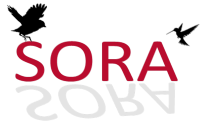Stopover rates and durations of migrant Northern Saw-whet Owls in southern Pennsylvania
Stopover rates and durations of migrating Northern Saw-whet Owls in southern Pennsylvania.
MICHAEL S. HURBAN, EMILY A. CARUANA, SARAH M. MUSILLI, Dept. Biol. & Physics, Canisius Coll., Buffalo, NY, SCOTT WEIDENSAUL, Wed Smith Center for Nature and Art, Millersburg, PA, H. DAVID SHEETS and SARA R. MORRIS, Dept. Biol. & Physics, Canisius Coll.
Although Northern Saw-whet Owls are common migrants, little is known about the stopover ecology of this species. Using banding data collected on 2374 Northern Saw-whet Owls from southern Pennsylvania, we investigated factors potentially affecting stopover rate and minimum stopover length. The likelihood of recapture was affected by date of capture, mass, and condition index in a logistic regression, although fat and keel scores were not significant factors in the model. Owls captured early in the season and owls with higher mass and condition index were more likely to be recaptured than later migrants and migrants with lower mass and condition index. Additionally, we found a significant difference in recapture rates among the six locations in this study. In contrast, we did not find any significant effects of date of capture, mass, condition index, fat score, or keel score on the length of minimum stopover, either treated independently or as part of a general linear model The effect of mass and condition index on recapture rate contrasts with previous studies on migrant passerines that generally exhibit the opposite pattern. Sexual dimorphism and differential response to audio lures may be factors contributing to the effects of date and condition.

